ИВАН ДОБРЕВ. ПРОЗРЕНИЯ В БЪЛГАРСКАТА СТАРИНА. С.: Slavia Verlag, 2007. 496 с.
ИВАН ДОБРЕВ. ПРОЗРЕНИЯ В БЪЛГАРСКАТА СТАРИНА. С.: Slavia Verlag, 2007. 496 с.
Book review.
More...Book review.
More...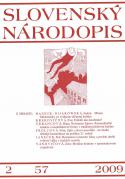
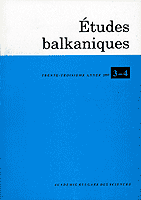
Régiek az elődökről The Ancients about the Ancestors (Szabados György: A magyar történelem kezdeteiről. Balassi Ki-adó. Budapest, 2006.) MAKK FERENC Jövőbe mutató koncepciók múltunkról Forward-Looking Ideas about our Past (Kijevtől Kalocsáig. Emlékkönyv Boba Imre tiszteletére. Ed. István Petrovics. METEM. Budapest, 2005.) VAJDA TAMÁS . Évszázadok Baranya megyei jogesetei Legal Cases of Centuries from Baranya County (A pécsváradi konvent hiteleshelyi oklevéltára 1254–1526. Ed. Ta-más Kőfalvi. Szeged, 2006.) PAPP RÓBERT „Igen hatalmas úr, jól ismeri az államügyeket” “He is a Very Powerful Lord, Familiar with the Affairs of State” (Emlékkötet Szatmári György tiszteletére. Szerk. Fedeles Tamás. [Egyháztörténeti Tanulmányok a Pécsi Egyházmegye Történeté-ből III.] Budapest–Pécs, 2007.) SOMOGYI ANDREA .. „Mindennapi kenyerünket add meg nekünk ma …” “Give Us this Day Our Daily Bread...” (Kolozsvári ispotály-számadások I. A Szentlélek ispotály számadás-könyvei 1601–1650. A számadások szövegét közzéteszi Márton Tünde és Mihály Ágnes; a kötetet szerkesztette és a mutatókat készítette Flóra Ágnes; a bevezetőt írta Rüsz-Fogarasi Enikő. Transylvania Emlékeiért Tudományos Egyesület, Budapest, 2006.) SZENDE KATALIN
More...Keywords: şcoli; biserici; Balcani; români
Articolul de faţă privind şcolile şi bisericile româneşti din Peninsula Balcanică în perioada 1918-1948 este realizat pe baza unor documente identificate în fonduri păstrate la Arhivele Diplomatice ale Ministerului Afacerilor Externe şi la Direcţia Arhivelor Naţionale Istorice Centrale din Bucureşti. Au fost studiate şi selectate documente de cea mai mare semnificaţie în scopul prezentării evoluţiei situaţiei şcolilor şi bisericilor comunităţilor româneşti situate la sud de Dunăre începând cu anul 1864, când a fost înfiinţată prima şcoală în Târnova (Macedonia) şi până în 1948 când statul român a abandonat acţiunea iniţiată de conducătorul Al. Ioan Cuza. Articolul prezintă această situaţie, foarte dramatică, a comunităţilor româneşti din Balcani pe baza documentelor de arhivă.
More...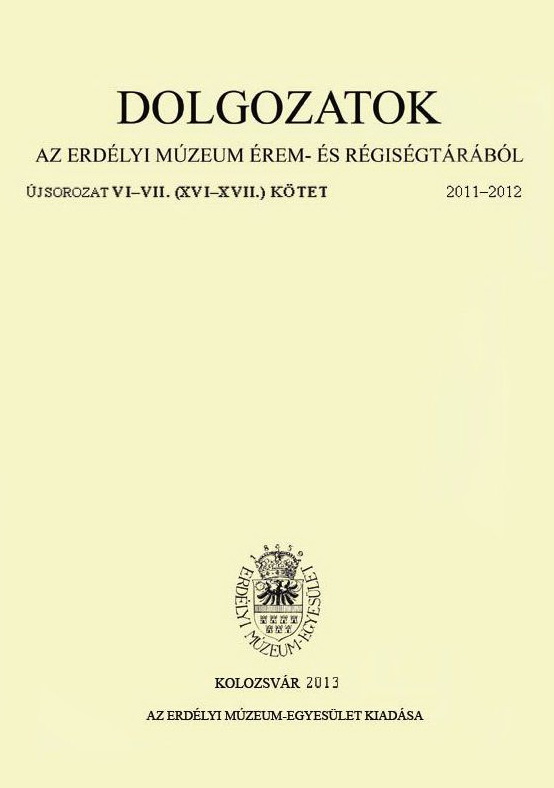
Keywords: Early Avar period; Transylvania; row-grave cemetery; Band-Vereşmort group; chronology; gepids; avars
One of the most important archaeological phenomena in Transylvania during the Early Avar Period is represented by the late group of the so-called row-grave cemeteries, named conventionally in the archaeological literature “Band-Vereşmort group”. The scientific research of these cemeteries started at the beginning of the 20th century with the excavations carried out at Band by István Kovács. Since then several other necropolises belonging to the same group have been identified and partially unearthed which led to a relatively intense scientific debate regarding mainly to the chronological and ethnical aspects. Based on literary sources as well as on the archaeological evidence, the early scholars (István Kovács, Márton Roska) ascribed the discussed sites to the Gepidic population, while the graves containing horse bones, situated on the edges of the cemetery at Band, were connected to the Avars. Due to the excavations carried out at Moreşti in the 1950s which resulted in the discovery of a cemetery dated in the Gepidic Period, Kurt Horedt succeeded to elaborate the chronology of the Transylvanian row-grave cemeteries. According to him, the graveyards belonging to the Gepidic Period (group III/Moreşti group) can be sharply separated from the ones dated in the Early Avar Period (group IV/Band-Vereşmort group) both from chronological and ethnic point of view. In his opinion the former belonged mainly to the Gepids and could be placed roughly in the first half of the 6th century, while the latter was assigned to “late Germanic” communities, showing also “nomadic” influence, and dated exclusively in the 7th century. He excluded the existence of any direct link between the two horizons. Horedt’s theory was severely criticized by István Bóna who, unlike Horedt, developed his opinion based on the similarities between the two mentioned groups. The polemics between the two scholars dominated the research on the topic in the 1970s and 1980s. In Bóna’s view, the beginnings of the Band-Vereşmort group could be traced back to the second half of the 6th century, or even earlier, and therefore the existence of continuity between the row-grave cemeteries from the Gepidic and the Early Avar Period was out of question. He ascribed the latter group to the Gepidic communities which survived the Avar conquest in 568 and lived continuously in Transylvania under Avar rule. On the other hand, he connected the burials containing horse bones to the Avars. Later this assumption was generally accepted in the Hungarian archaeological literature. Further arguments for the late Gepidic interpretation of the Band-Vereşmort group were brought by Radu Harhoiu who published the cemeteries from Bratei 3 and Galaţii Bistriţei excavated in the 1970s. He dated the whole group in the second half of the 6th century – first half of the 7th century and considered that these cemeteries were used exclusively by the late Gepids living under Avar rule. The burials with horse bones were interpreted as a result of acculturation of the Gepids which adopted Avar burial customs and artefacts. In the course of approximately 100 years which passed since the publication of the cemetery at Band, the scholars focused on two main topics: chronology and ethnicity. Despite of this debate, in the current state of research both of them are far from being clarified. Taking a closer look, one can observe that the date of the collapse of the Gepidic Kingdom (567) and the Avar conquest in the Carpathian Basin (568) are usually considered a sharp borderline between the ‘Gepidic’ and ‘Avar’ material culture, and therefore between the Moreşti group and the Band-Vereşmort group. In the same time the cemeteries from the Tisza region are placed generally before this date, many times not on archaeological, but on historical grounds. However, several finds seem to belong to the first decades of the Avar Age (e.g. Egerlövő, grave 31 – with a coin of Justin II and Sophia; Tiszagyenda – with a coin of Maurice Tiberius; Kisköre-Pap Tanya, graves 42 and 43; Hódmezővásárhely-Kishomok, graves 1 and 7). In Transylvania the situation is less clear and therefore the question if the Moreşti type cemeteries reached the Avar Period or not remains open. The same problem rises in the case of the date of emergence of the Band-Vereşmort group. Recent results showed that the beginning of the group already in the 6th century is beyond doubt, but still, it is not clear enough to which date it can be traced back. There are a few elements which might indicate a date prior to the Avar conquest, like Noşlac, grave 121 or the stray finds coming from the vicinity of cemetery 3 at Bratei, but there is no evidence that these discoveries belonged to the cemeteries in question. The end date of the Band-Vereşmort type cemeteries is also unclear and is hindered by the fact that most of the graveyards were only partially unearthed. In this regard it seems more expedient to analyze the different cemeteries separately. The latest elements were discovered at Noşlac which reach the 8th century. Concerning the ethnic interpretation a relatively great variety can be observed. However, in this regard the research was seriously marked by the nationalistic approach of the communist era. Beginning with the second half of the 1950s the main task of the Romanian archaeology was to identify the local Daco-Roman population during the Migration Period and Early Middle Ages in order to find a link between the moment of the abandonment of the Roman province Dacia and the Medieval Period. This endeavour led to the emphasizing of the importance of the autochthonous population as well as to the minimizing of the significance of the ‘migratory’ peoples. This approach resulted in the emergence of a set of clichés which, in slighter degree, persists even today. One of the most important problems is related to burials containing horse bones which generally belong to the latest phase of the cemeteries. These were traditionally connected to a ‘nomadic’ community (e.g. Avars, Cutrigurs). Recently, Radu Harhoiu assigned them to the acculturated Gepids. In this regard the moment of the appearance of the Avars in Transylvania is of great significance. Since Kurt Horedt it is a commonplace in the Romanian historiography that the Avars entered in Transylvania for the first time only at the middle of the 7th century, or at the earliest, around 630. In contrast, Bóna believed that the first Avars reached the Transylvanian Basin already in the first decades after they settled down in the Carpathian Basin. Unfortunately, our present knowledge on this topic does not permit the establishment of the moment when the Avars entered in Transylvania, first of all, because of the reduced number of the well documented and published excavations. On the other hand, the fact that the research has not succeeded in identifying the specific burial customs and artefact types which could be connected undoubtedly to the first generation of the Avars in the Carpathian Basin was totally left out of consideration. Recent studies pointed out that the typical ‘Avar’ material culture was not brought by the Avars from the East, but emerged in the Carpathian Basin after 568 comprising several elements with different cultural roots (e.g. eastern, Byzantine, Germanic, Romanized, Slavic etc.). As it was shown above, the central question of the debate regarding the Band-Vereşmort group is related to the continuity or discontinuity of the Gepidic population in Transylvania in the last third of the 6th century – first half of the 7th century. It was observed already in the 1970s that the discussed cemeteries contained several grave-goods whose origins cannot be found in the material culture of the Gepidic Period, instead they have convincing analogies in the Late Merovingian necropolises from Western- and, mainly, Central-Europe. Taking this into account, the question which rises is if these elements arrived in Transylvania together with their owners colonized from the West, or they are the results of a development of the local communities which had strong relations with the Merovingian world. All these unsolved problems led to a lot of confusions and contradictions in the archaeological literature. This can be attributed mainly to the inflexible use of the concept of ethnic identity by most of the scholars, who considered it to be a rigid and permanent entity which can be identified based on the grave-goods or, in general, on the material culture. However, the archaeological evidence shows a much more complex picture where different cultural elements are in permanent interaction. In this respect a good example is the cemetery at Gâmbaş which was considered the most representative necropolis of the Avars from Transylvania by Kurt Horedt on one hand, and was thought to be a late Gepidic graveyard by Radu Harhoiu on the other hand. According to the present state of research it seems that the material culture of the Transylvanian Basin during this period included several elements of different origins. Therefore, the question asked in the title of this paper remains unanswered. On the other hand, the future research should focus not only on chronological and ethnical, but also on social aspects. To achieve such results new, well documented excavations as well as anthropological analysis are needed.
More...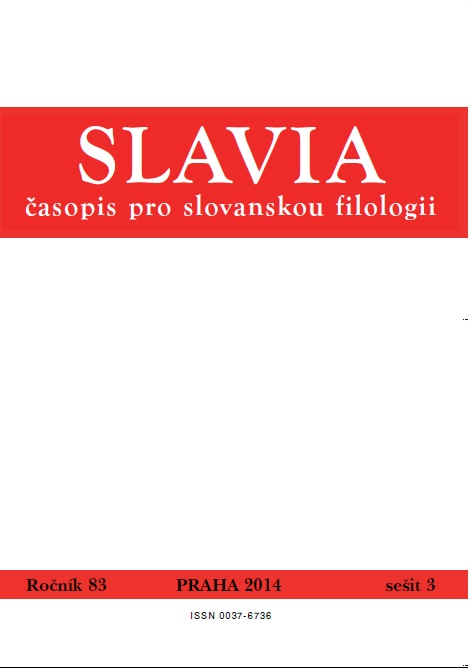
Keywords: antiquity; early middle ages; Iron Gates; monetary circulation disappearance; Roman Empire; transition
The invasion of the Huns in Europe in 375 represents a turning point not only in the history of Roman Empire, but also in the economic, social and demographic history of Eastern and Central Europe. The first witnesses of the troubles produced by the arrival of the Huns in the area of the Iron Gates of the Danube are the hoards concealed in the southern part of Oltenia and Banat between 375 and 402, as well as by the severe dropping of the scale of the diffusion of the fresh coinage, both in the fortified settlements and in the area situated more deeply inland
More...Keywords: baking lid; bread baking; Avars; ancient Hungarians; lifeways; diet;
Baking bells (or baking lids) were actually very simple ovens that were suitable for baking bread, meat and fish. This method of food preparation was practiced since prehistory in the Mediterranean world and we can find descriptions of baking bells in the Bible and in the works of the writers of antiquity. This individual mode of baking bread became especially widespread during late antiquity. In some regions, the use of baking bells survived either owing to a general stagnation (as in the Balkans or the Alpine lands), or to unusual living conditions (as in the Roman military camps of the Augustan period and in the medieval Ottoman-period border forts in Hungary). Their increasingly frequent use in late antiquity was a reflection of economic decline and the disappearance of urban bakeries. At the same time, the adoption of baking bells by the Barbarian peoples (such as the Avars and the ancient Hungarians) settling on the fringes of the Mediterranean world can be seen as a cultural advance and the adoption of local traditions. Baking bells were still used in the Carpathian Basin as late as the 19th century and they can be found in some areas of the Balkans even today.
More...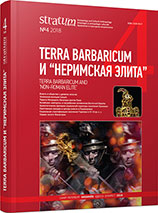
Keywords: Middle Danube; Hunniс Time; East Germans; female costume; social marker
A female costume from the burial Vranja (province of Pannonia II) is used to examine analogies between the prestigious princely gown and the “ordinary” costume of the Germans of the Middle Danubian region in 400—450s. The women’s garment with small bilamellar fibulae from the Vranja burial is a simplified replica of the “princely” costume with big bilamellar fibulae. The same dress, but, as a rule, incomplete, was also found in other Danubian burials of the Hunnic period, which contained small fibulae. The costume from burials with small fibulae is a “democratic” replica of rich costumes from the privileged Danubian burials of the Great Migration period. Burials with quite complete dresses imitating “princely” costume, such as Vranja, belong to the upper social layer of the “middle class”.
More...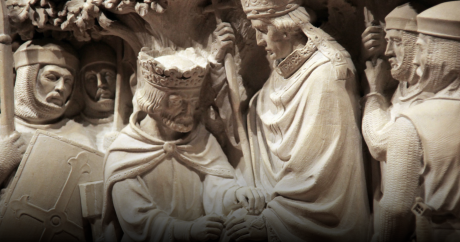
Keywords: Great Moravia; Moravians; Medieval Hungary; legislation; elections;
The article examines the beginnings of people’s assemblies in the territory of present-day Slovakia. It consists of two parts. While the first one is concerned with the period of the Mojmírid dynasty (the 9th century), the second one deals with the period of the Arpadian dynasty until the 12th century. For both periods, it is typical that assemblies were termed variously, for example as “all the Moravians”, congregatio, consilium, etc. They were mostly juridical bodies for solving conflicts between individuals, but they also functioned as electoral or consultative bodies. In the Mojmírid period, assemblies used to gather mostly once a month (in connection to the central fairs of the Moravians), while their periodicity was lower in the Arpadian times.
More...
Keywords: Eastern Croatia; Lovas; Bronze Age; excavation; systematic field survey;archaeometallurgy;
The archaeological heritage of the Lovas Municipality, located in eastern Croatia (western Syrmia), has been known to the wider archaeological public since the middle of the 20th century, when a Middle Bronze Age (MBA) hoard of gold and bronze finds was discovered. However, apart from the importance of the hoard for the definition of the MBA in Croatia, any detailed systematic research in the area was not attempted until 2011, when the Archaeological Museum in Zagreb conducted its initial research season in the Lovas Municipality. The project was restarted in 2017, in cooperation with the Lovas Municipality and the Institute of Classical Archaeology of Charles University in Prague, and has been continuously running ever since. In the last five years, research in the Lovas Municipality included a systematic field survey, targeted trial excavations, geophysical surveys, as well as a re evaluation of the data collected through previous research and in 2011. Moreover, the project included the re study of the MBA Lovas and Vukovar hoards. This paper presents preliminary results of the 2011, 2017, and 2018 seasons, focusing primarily on the current insight into the archaeological topography of the Lovas Municipality. Additionally, the paper brings the preliminary results of scientific analyses of the Lovas and Vukovar hoards that were conducted in 2020.
More...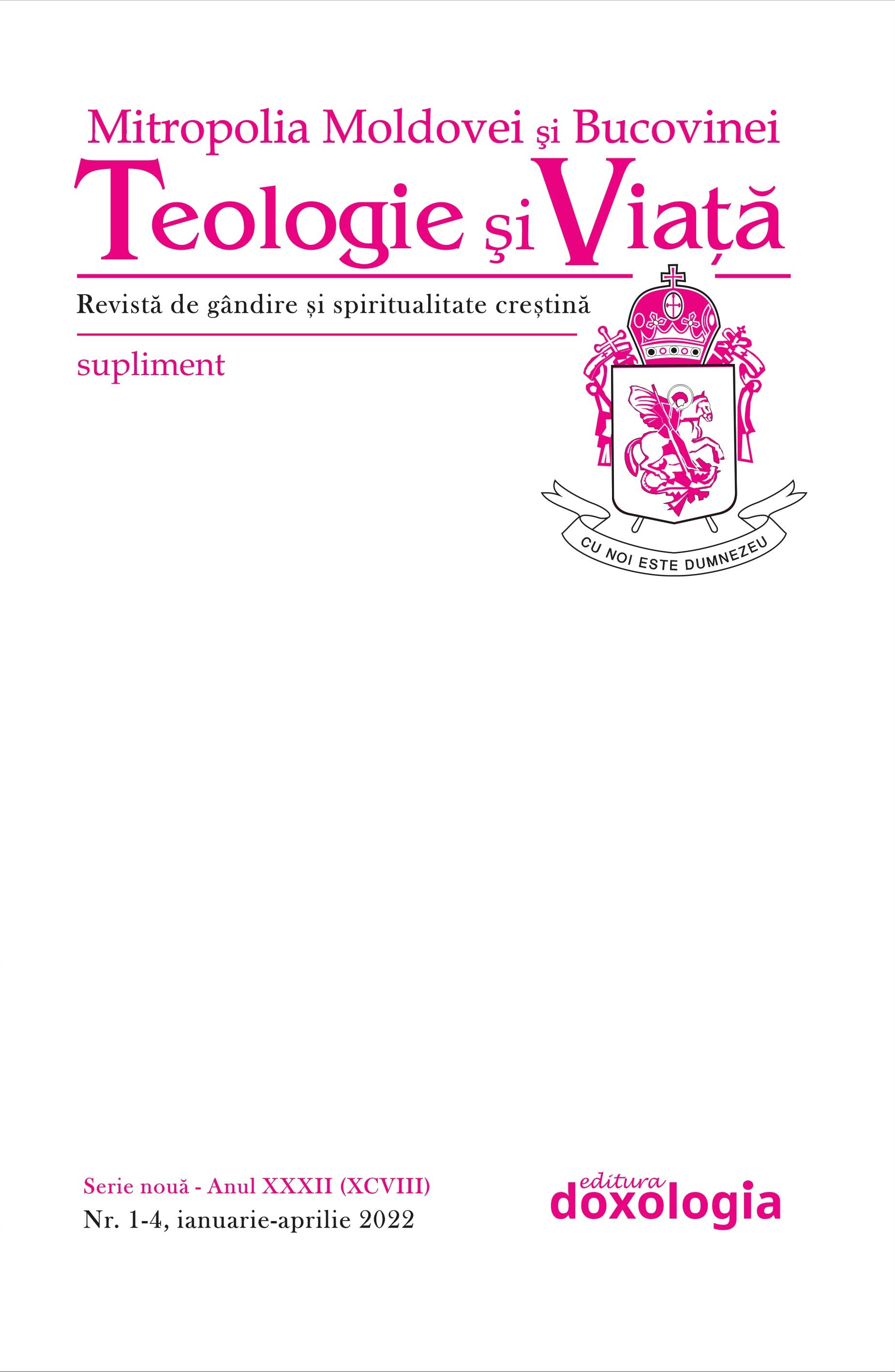
Keywords: Isidore of Pelusium; Eusebius of Pelusium; Tell el-Farama; Church of Egypt; Late Antiquity; pastoral letters;
This paper aims to sketch as accurately as possible the moral portrait of one of the recipients of Saint Isidore’s epistles. In addition to the 15 letters addressed directly to Bishop Eusebius of Pelusium, we also find explicit references to him in another 54 letters, but also implicit references in several others. Starting from the observations of Pierre Évieux and Constantine Fouskas, this paper goes a little further in the analysis of the letters, systematizing the reproaches made by Saint Isidore in order to recover a series of details regarding the historical context in which he carried out his activity.
More...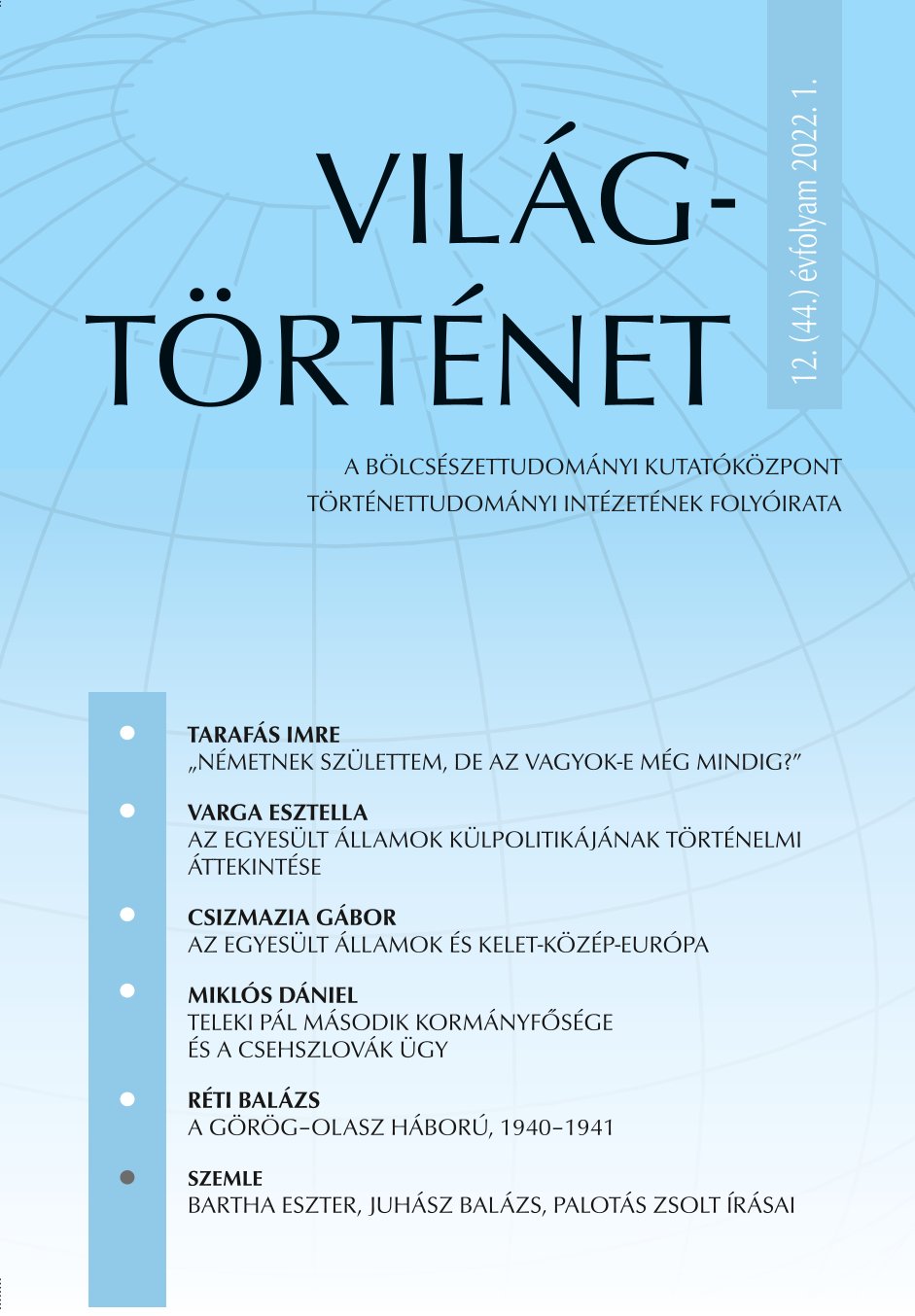
In this study I would like to examine the Battle of the Catalaunian Plains. In the first part of this, I will talk about the causes of the campaign of 451; the treachery of Honoria, the Frank succession, and the Ostrogotich immigrants in the Visigothic court. Then I will move forward to the campaign, and I will show how the opponent forces manoeuvred, what were their plans, and how they arrived at the place of the battle. Then I will examine the order of the battle, the battle plans, and fight of the forces, which continued through the night. Then I will talk about the next couple of days, the sieges of the camps, and the reason why the Romans left the battlefield. Finally, I will finish my presentation with my conclusion, the examination of the performance of the military leaders, the losses of the opposing forces, and I will claim the winner at the end of my presentation.
More...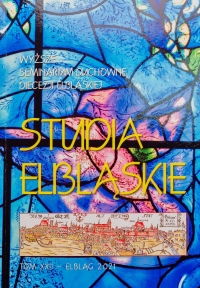
Keywords: Biblical antropology; man; woman; corporality; sexuality; imago Dei
The two stories of the creation of the world and man that open the book of Genesis (1:1 – 2:4a and 2:4b–25) form the basis of biblical anthropology and thus also of Christian anthropology. Contrary to gender ideology and a strong anthropological crisis, they emphasise that corporality and gender diversity are integral elements of God’s created world order. They show sexuality as a gift connected to, but transcending, the corporeal condition of man and reproducing something of God, who is absolutely incorporeal. Man has been assigned an absolutely unique role in that he is to be a kind of icon of God in the world. The careful choice of Hebrew vocabulary and specific grammar, with clear references to the physical characteristics proper to the male and female sex, emphasise the equality of man and woman. Since the whole man is an image and representation of the incorporeal God, this also applies to his bodily side. The image of God in man is therefore also the rich and mysterious dynamism of sexuality, the fruit of which is love.
More...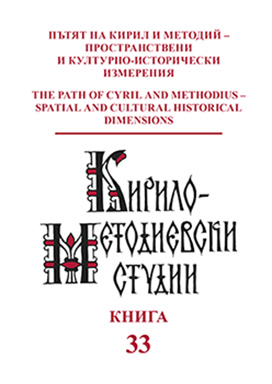
Keywords: cultural tourism in Bulgaria; Cyrillo-Methodian cultural route.
The article presents the author‘s concept for creating an interactive museum of Cyril and Methodius work and traditions on the territory of Sofia. The relevance of the proposal is argued. The goals and tasks of such a future research, information and educational center, its structure, as well as the expected results for society from the realization of the idea are presented.
More...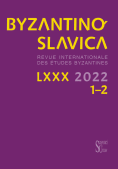
Keywords: Slavonic translations ;Karpino Gospel ;Macedonian dialect features ;late 13th century ;minor Greek menology ;14th centuries ;Constantinople Typikon ;Slavic Ancestors ;Slavic Calendars;
While some Slavic calendars of saints from the 12th through 14th centuries contain Church Slavonic translations of fragments of textual formulae from the Constantinople Typikon (hereafter “CT”), and while there are Church Slavonic translations of an entire typikon (viz., the Studite Typikon), it is highly unusual to come across a Slavic menology that constitutes for the most part a close translation of the commemorations in a more minor Greek menology tradition, without major mediation by Slavic ancestors. This study focuses on such a calendar, the full menology to the long lectionary Karpino Gospel, a manuscript with Macedonian dialect features which was produced in western Bulgaria and has been dated to the late 13th century (hereafter “KE”).
More...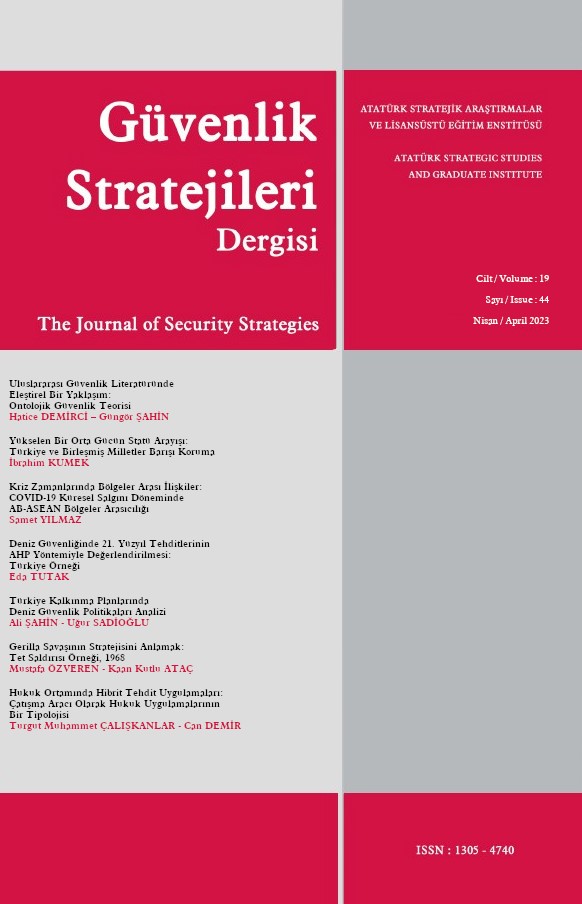
Keywords: Turkish Foreign Policy; Turkish Peacekeeping Activism; Emerging Middle Power; Status-seeking; United Nations Peacekeeping;
This study uses “middle power” and “status-based” approaches in the International Relations literature to explain Türkiye’s motivation for participation in UN peacekeeping operations. Turkish peacekeeping activism is considered a recognitive practice based on status-seeking. It is claimed that especially since the 2000s Türkiye has participated in operations to gain a reputation and raise its international status before UN countries, to become visible by contributing to global peace and conflict management, and to influence member countries in its favour to win the elections for non-permanent membership in the UN Security Council. To determine the overall trend and motivation in participation, the international context, the domestic political environment, and the general foreign policy orientations of the governments are taken into account. Personnel contributions related to 28 peacekeeping missions between 1988 and 2022 are examined by reviewing UN Peacekeeping Data, the Grand National Assembly’s decisions, and foreign policy officials’ statements. Suggestions on the future of Turkish peacekeeping policy are also presented in the study.
More...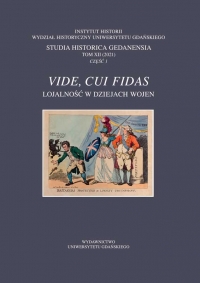
Keywords: military history; Later Roman Empire; North Africa; Justinian; army mutiny
Shortly after the liquidation of the Vandal rule in northern Africa and the restoration of the Roman administration, the newly established prefecture was shaken up by a series of military mutinies and rebellions. The revolts in the years 536–545 AD are represented in the contemporary witness accounts (esp. historian Procopius of Caesarea, poet Flavius Cresconius Corippus) as a case of a “civil war” among the Romans in the context of the concurrent conflict with the Berber (“Moor”) tribes. The history of the army mutinies has been depicted in accordance with the literary conventions and the propaganda ‑ ‑oriented assumptions of the authors, with a striking background picture of the Roman army in a state of continual readiness to rise up in revolt against the emperor’s authority, which is something virtually unknown from any other contemporaneous war theatre, in consideration of a comparable scale. In his analysis of the unfolding events, the Author attempts to address not only the questions of the political intentions of the various rebellion leaders, but also (or even in particular) the motivations which would make the soldiers take part in such precarious undertakings. He points to a number of political, religious, and economic factors which caused the northern African army mutinies to escalate so violently, concluding with a paradoxical observation that in the newly established prefecture, the emperor would have counted on the loyalty of the locally recruited soldiers rather than on the elite troops to whose military skills he owed the re‑conquering of Africa.
More...